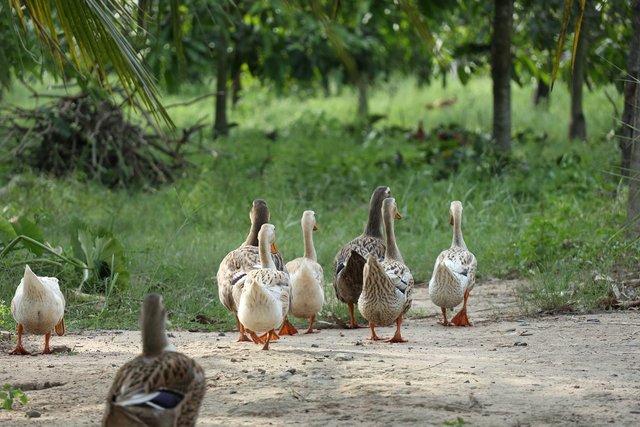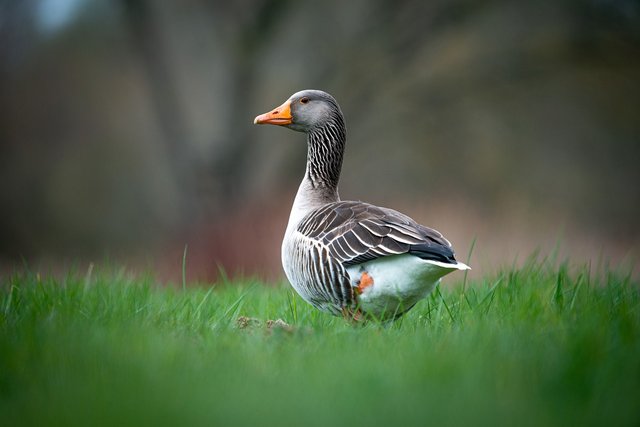
Ducks, scientifically known as Anatidae, are a group of water birds known for their adorable characteristics and unique behavior and adaptation to the aquatic environment. In scientific classification, they belong to the order Anseriformes which also includes geese and ducks.
Morphology and Anatomy
Ducks have usually round bodies and short legs. One of the most striking characteristics of ducks is their wide, flat beaks, ideal for filtering food from the surrounding water or wet soil. Ducks' feet are equipped with webbed toes, allowing them to swim very well. Their feathers are often waterproof due to a layer of oil produced from special glands at the base of their tails.
Habitat and Behavior
Ducks can be found in a variety of aquatic habitats, from lakes and rivers to swamps and ponds. They are highly adaptable birds and can live in both freshwater and saltwater environments. Ducks often live in small groups called flocks, and they are social animals that communicate with each other with a variety of distinctive calls.
Eating habit
When it comes to food, ducks are omnivores. They eat a variety of foods, including grass, aquatic leaves, insects, insect larvae, and even small fish or crustaceans. Ducks often forage for food in shallow water or at the water's edge, using their distinctive beaks to filter food from mud or water.
Reproduction and Child Care
Female ducks usually make nests from feathers and grass at the water's edge or in bushes near the water. They usually lay eggs in their nests, and the female will incubate the eggs until they hatch. Once the ducklings hatch, they are immediately able to swim and forage on their own, but usually remain close to their mother for protection and guidance.
Adaptation and Self-Protection
Ducks are intelligent birds and have several unique adaptations to protect themselves from predators. One of the most well-known adaptations is the ability to swim quickly to escape danger, as well as the ability to hide in dense bushes or aquatic plants. Ducks' waterproof feathers also help them stay dry and reduce the risk of hypothermia when swimming in cold water.
Importance in the Ecosystem
Ducks have an important role in aquatic ecosystems because they help control aquatic insect populations and the vegetation around their habitat. They are also part of the food chain, eaten by a variety of predators from freshwater fish to birds of prey such as eagles and termites.

Different Types of Ducks
There are many species of ducks throughout the world, with variations in feather color, size, and behavior. Some examples include the mallard duck which is common in many parts of the world, the beautiful mandarin duck from East Asia, and the colorful duck from South America.
Overall, ducks are one of the most well-known and appreciated water birds for their beauty, unique morphology, and their role in maintaining the balance of the aquatic ecosystem. Their ability to live well in a variety of habitats and the adaptations they have to aquatic life make them the subject of great interest in biological studies and nature conservation.
Upvoted! Thank you for supporting witness @jswit.
Downvoting a post can decrease pending rewards and make it less visible. Common reasons:
Submit
Downvoting a post can decrease pending rewards and make it less visible. Common reasons:
Submit
Upvoted. Thank You for sending some of your rewards to @null. It will make Steem stronger.
Downvoting a post can decrease pending rewards and make it less visible. Common reasons:
Submit